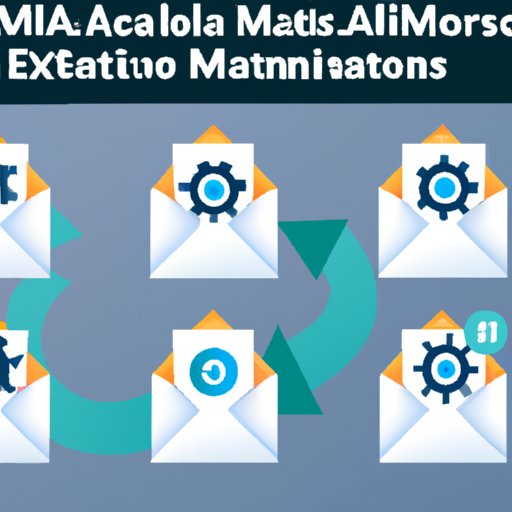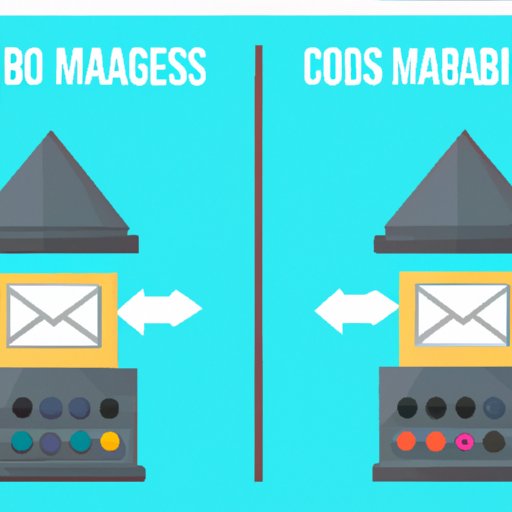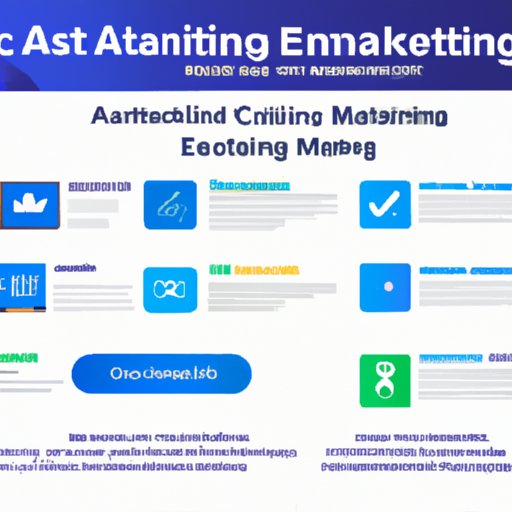Introduction
Automated emails are one of the most powerful tools available for businesses to reach their customers. Automated emails are pre-written emails that are sent out based on predetermined triggers, such as when a customer signs up for a service or makes a purchase. These emails can be used to build relationships with customers, inform them about new products and services, and drive sales. In this article, we’ll explore how to send automated emails, from selecting an email platform to leveraging them for maximum impact.
Step-by-Step Guide to Setting Up Automated Emails
The first step in creating an automated email campaign is selecting an email platform. There are many different platforms available, including Mailchimp, Constant Contact, and SendinBlue. Each platform has its own features and capabilities, so it’s important to research the options carefully before making a decision.
Once you’ve selected your platform, the next step is to set up triggers. Triggers are events that tell the system when to send out an automated email. For example, if someone signs up for your newsletter, you can set up a trigger to send out a welcome email. Triggers can also be used to send out follow-up emails or special offers.
The final step is to create the email content. This is where you can really get creative. You want to make sure the content is engaging and relevant to your target audience. Keep it concise and make sure to include a clear call-to-action. Use images and videos to add visual interest and break up the text.

Tips for Writing Effective Automated Emails
When it comes to writing effective automated emails, there are a few key tips to keep in mind. First, keep your emails concise. People are busy and don’t have time to read long emails. Get to the point quickly and don’t forget to include a call-to-action.
Second, personalize your messages. Addressing people by name and using language tailored to their interests will help your emails stand out. You can also use data from past interactions to tailor messages to specific segments of your audience.
Finally, use a clear call-to-action. Make sure your readers know exactly what you want them to do after reading your email. Whether it’s to click a link, make a purchase, or sign up for a service, make sure the call-to-action is easy to understand and stands out from the rest of the text.

Best Practices for Using Automated Emails
There are several best practices to keep in mind when using automated emails. First, segment your audience. Tailoring your messages to specific segments of your audience will help ensure they are more likely to engage with your emails. You can use demographic information, past interactions, or even purchase history to segment your audience.
Second, test your emails. Before sending out an automated email, it’s important to test it to make sure everything works as expected. This includes testing the design, spelling, grammar, and functionality of the email.
Finally, monitor your results. Once your emails are sent out, you’ll want to track how they perform. Look at metrics such as open rate, click-through rate, and conversion rate to get an idea of how successful your emails are.
How to Leverage Automated Emails for Maximum Impact
To really make the most of your automated emails, it’s important to leverage them for maximum impact. One way to do this is to utilize A/B testing. A/B testing allows you to test different versions of your emails to see which performs better. This can help you refine your content and find the best way to engage your audience.
Another way to maximize the impact of your automated emails is to incorporate them with other marketing channels. For example, you can use email automation to nurture leads that come from social media or to remind customers about upcoming events.
Finally, take advantage of automation tools. Automation tools can help you automate mundane tasks, such as sending out welcome emails or following up with customers. They can also help you track and analyze your results, so you can make informed decisions about your campaigns.

Pros and Cons of Automated Email Campaigns
As with any marketing strategy, there are both pros and cons to using automated emails. On the plus side, automated emails can save time and money by automating mundane tasks. They can also help you reach a larger audience and build stronger relationships with your customers.
On the downside, automated emails can come across as impersonal and may not be as effective as personalized messages. Additionally, if not properly managed, automated emails can become annoying and lead to unsubscribes.
Strategies for Optimizing Your Automated Email Performance
To ensure your automated emails are performing optimally, there are a few strategies you can employ. First, refine your target audience. Make sure you’re targeting the right people with the right message. This will help ensure higher engagement rates.
Second, utilize advanced tracking. Track not only opens and clicks, but also conversions and ROI. This will give you a better understanding of how your emails are performing and allow you to make adjustments accordingly.
Finally, analyze your results. Take the time to review your emails and look for areas of improvement. Are there certain segments of your audience who are more likely to engage? Are certain messages more effective than others? Answering these questions will help you optimize your automated email performance.
Conclusion
Automated emails are an incredibly powerful tool for businesses to reach their customers. By following the steps outlined in this article, you can set up and optimize your automated emails for maximum impact. From selecting an email platform and setting up triggers to refining your target audience and utilizing advanced tracking, there are many strategies you can use to ensure your emails are performing optimally. Automated emails are an invaluable tool for businesses looking to build relationships with customers and drive sales.
Final Thoughts on Automated Emails
Automated emails are a great way to stay connected with your customers and keep them engaged. With the right strategy and tools, you can use automated emails to build relationships, drive sales, and grow your business.
(Note: Is this article not meeting your expectations? Do you have knowledge or insights to share? Unlock new opportunities and expand your reach by joining our authors team. Click Registration to join us and share your expertise with our readers.)
